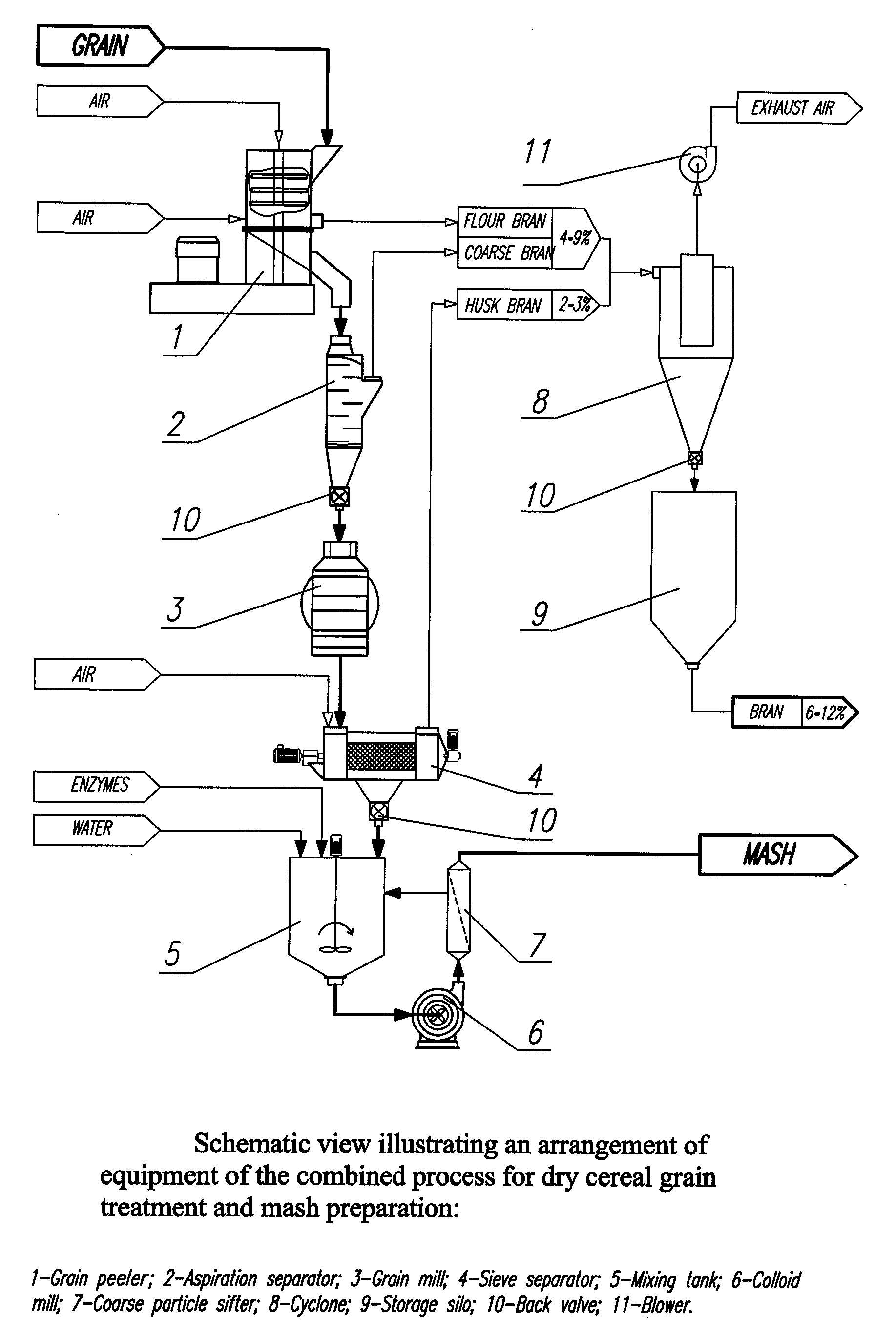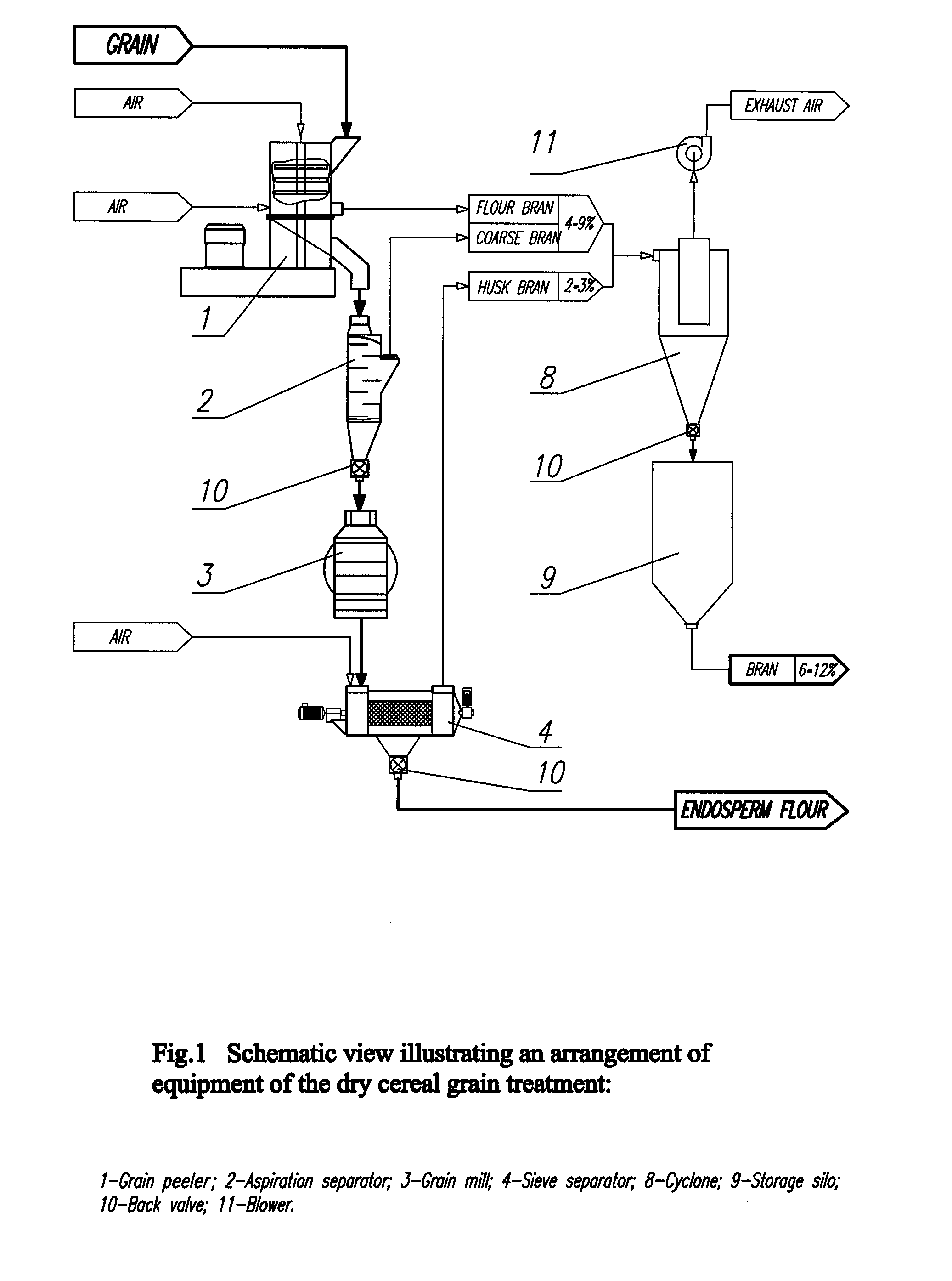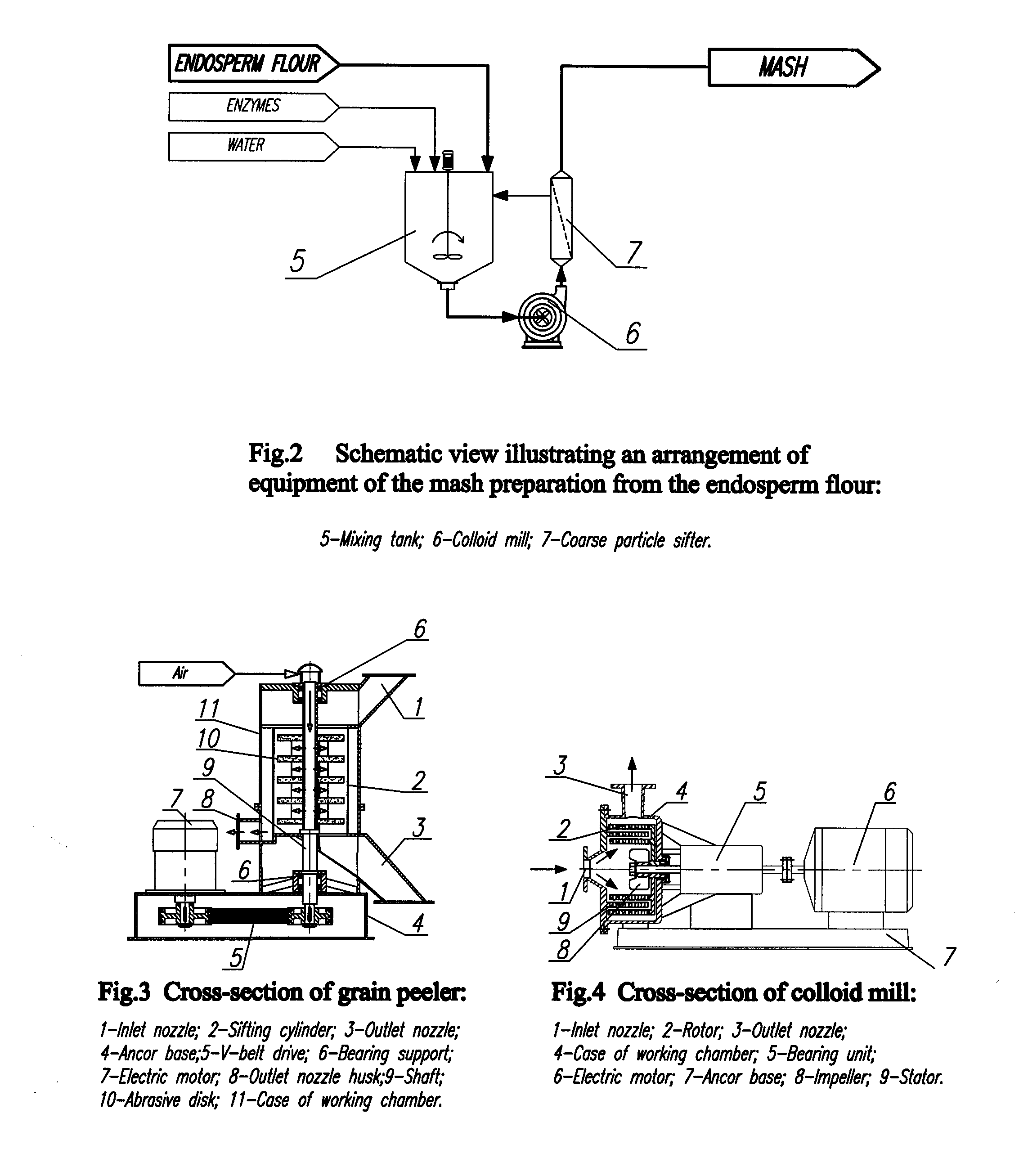Cereal grain treatment and mash preparation for by-products
- Summary
- Abstract
- Description
- Claims
- Application Information
AI Technical Summary
Benefits of technology
Problems solved by technology
Method used
Image
Examples
example 1
[0041]Peeled wheat (with peeling depth of 6% of the wheat kernel mass) is milled using a grain mill, and mixed with water in a 1:2 ratio to form the batch. The batch is brought to 60 degrees C. and liquefaction enzymatic agents are added in the amount of one AC unit per one gram of starch. The mixture then undergoes mechano-activation in the rotary pulsing apparatus (RPA) 300 type apparatus in the range of oscillation frequencies between 1 and 200 kHz with impulse duration of 0.05 seconds and 20 processing cycles.
[0042]In alcohol production, substrate mechano-activation is used to activate enzymes either contained in the substrate being processed, or to activate enzymatic agents subsequently added to the mix. This process is facilitated by the dispersion of fine particles contained in the mixture (the colloidal mill effect). It has been found experimentally that the mechano-activation process is most efficient in the range of oscillation frequencies between 1 and 200 kHz, with impul...
PUM
 Login to View More
Login to View More Abstract
Description
Claims
Application Information
 Login to View More
Login to View More - R&D
- Intellectual Property
- Life Sciences
- Materials
- Tech Scout
- Unparalleled Data Quality
- Higher Quality Content
- 60% Fewer Hallucinations
Browse by: Latest US Patents, China's latest patents, Technical Efficacy Thesaurus, Application Domain, Technology Topic, Popular Technical Reports.
© 2025 PatSnap. All rights reserved.Legal|Privacy policy|Modern Slavery Act Transparency Statement|Sitemap|About US| Contact US: help@patsnap.com



